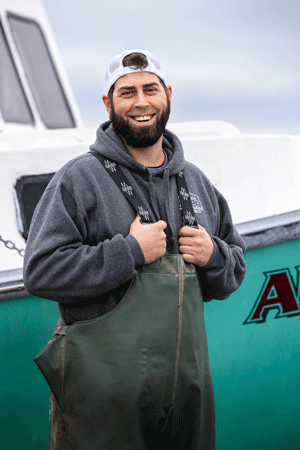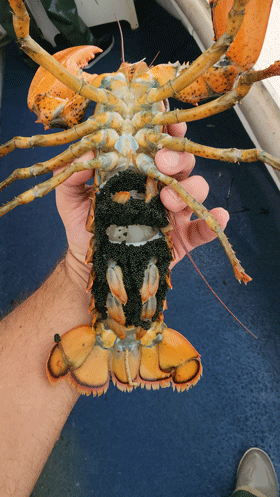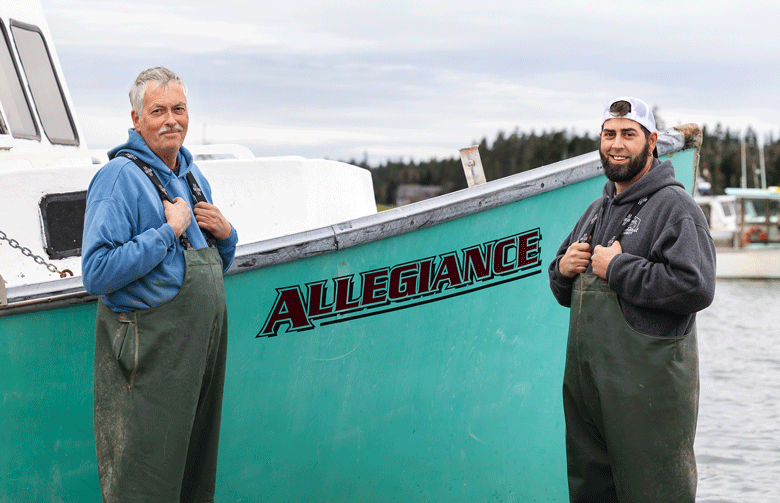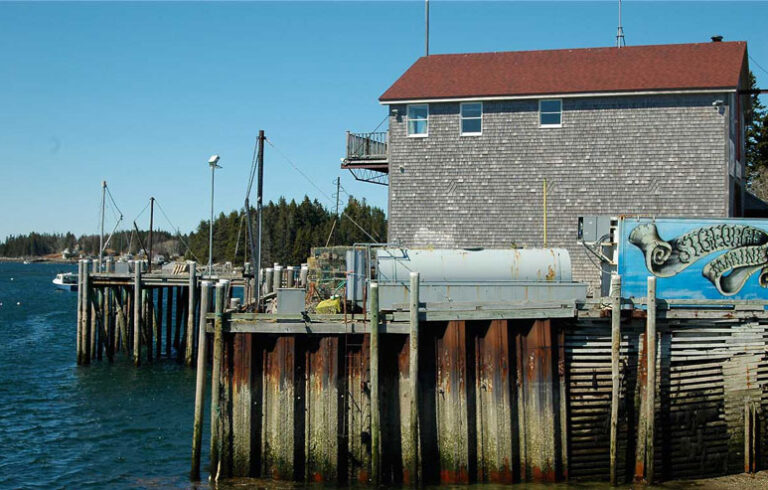Every morning, thousands of Maine fishermen and harvesters set about their work unobserved, quietly hauling in the catch from our waters and our mudflats. But a handful of Maine fishermen are not only observed, but seen by hundreds of thousands around the globe.
“We go live every day we go lobstering,” says Kelly Hinkle of Addison. “Two days ago, we had 800,000 people watching us, between my father and me.”
From the F/V Allegiance, Hinkle and his father, Ron Hinkle, livestream their work on TikTok, a social media platform used for sharing short videos on anything from dance moves to food to fitness and, as it turns out, fishing.
“Yesterday, there was a woman who watched us from 6 a.m. to the end of the day,” Hinkle says. “We went through three batteries, and she watched every trap get hauled that day.”

Hinkle’s viewers span the globe with notable numbers in far-flung places in the U.S. like Houston, and around the globe in New Zealand, Malaysia, and Indonesia.
Before moving to TikTok, Hinkle was known for his videos of life in rural Maine made under the name Downeast Cowboy, and for his Maine-themed children’s books. But things exploded when he started his TikTok account and shared a short video of snow curling and then falling off his roofline.
“I gained 20,000 followers overnight,” he recalls.
Since then, Hinkle’s content—and his following — have expanded. More than 140,000 people follow “The Downeast Cowboy” on TikTok, as he streams facets of life in rural Maine, including working on his woodpile, boats, and even blueberrying. But mostly, he and his father introduce their viewers to the inner workings of Maine’s lobster fishery, like the cost of bait, how long it takes to be licensed, how they build their traps, and Maine’s increased whale-protection measures.
“Every day we talk about the weak link [in our ropes],” says Hinkle, referring to the breakaway technology fishermen use to prevent whale entanglements. “We talk about the traps, pricing, the different parts, and we go live making the traps, that’s a really popular feed. We get a lot of different questions, like, how deep is the water where you’re fishing? How do you have cell service so far out in the ocean? They don’t realize we’re within six miles of the coast.”
At first, Hinkle was worried about the reaction of his fellow fishermen, but that fear was unfounded.
“Guys that haul right beside us, they watch us live because they think we’re comical,” laughs Hinkle. “Now we’re called the TikTok boat in the harbor.”
“Guys that haul right beside us, they watch us live because they think we’re comical. Now we’re called the TikTok boat.”
As social media influencers, Hinkle and his father are in good company at sea and on TikTok. Fellow Maine fisherman Jacob Knowles has a TikTok following of more than 2.5 million and also uses his platform to educate viewers around the world about Maine’s fisheries. His TikTok journey took off with a lighthearted prank, a video showing his sternman, Keith Potter, startling another man with an eel.
“And that was the first viral video, with 500,000 views,” recalls Knowles “After that, we started looking more seriously at stuff on the boat to share. I thought maybe people would find the sustainability part of it interesting, what we do to protect the lobsters.”
Knowles thought correctly.
“One day, I showed a lobster full of eggs, and that was the first multi-million-view video,” he recalls.
Those “egger videos” are among his fans’ favorites. In them, he holds up a female lobster whose abdomen is laden with small black eggs—more than 20,000 of them, he explains—then shows where fishermen put a “V notch” in the tail to let other fishermen know the female is a breeder. Lastly, he waves a bait fish near her claw, saying, “Let’s send her on her way with a snack!” She snaps up the fish in one claw, holding it tightly as she drops back beneath the waves.
In other videos, Knowles demonstrates how he removes barnacles from a lobster shell. If left on, in some cases, the barnacles could eventually stop the lobster from shedding its shell or from using its claws. Knowles cracks the barnacles off with some pliers, hands the lobster a snack for the road, and sends it on its way.
Maine’s sustainability measures regularly surprise viewers.
“Some people are surprised to learn how much work fishermen invest in protecting the fishery, so we enjoy shining a light on sustainability,” says Knowles. “Fishing is our livelihood. We have to care about it.”
Gouldsboro clammer and wormer Wayne Bishko has built a TikTok audience of 112,000 by taking viewers to work with him onto—and below— Maine’s mudflats. In addition to softshell clams, Bishko works all year long harvesting bloodworms and sandworms for use as recreational fishing bait.
“One of the biggest questions I always get is will you eat one?” says Bishko, laughing. “No.”

After showing his viewers the two fangs on a sandworm and four fangs on a venomous bloodworm, viewers often ask if it’s safe to walk on the mudflats.
“I tell them don’t change your routine of life just because these things are there,” says Bishko. But in his videos, he does advise caution when handling them as bait, because they can bite.
“You guys want to be careful,” he says as a bloodworm writhes attempting to bite his palm. “Those two fangs can definitely do some damage.”
And it isn’t only bloodworms and sandworms. Recently, Bishko captured spaghetti worms and a shimmy worm. In other videos, he films the clam-eating efforts of a milky ribbon worm and its long proboscis. The longest worm he’s seen stretched out to more than six feet long.
Watching Bishko, viewers see how much work goes into harvesting softshell clams and marine worms, as he heaves his rake through the ice before pulling a retreating worm quickly from the clay and gravel.
“Four or five years ago I would never have thought I’d be doing this. It just started to snowball,” says Bishko. “You’re connecting on a level and showing people something they’ve never seen before. And you’re hoping they’ll continue to follow along on the journey, building that connection with people. That’s kind of what it’s about I guess.”





